Hydraulic Structure and Civil Training Package for Beginners, 10 Practical Exercises
$280.00 Student Discount
This Training Package includes 10 practical exercises that are numerically simulated by ANSYS Fluent software for BEGINNER users in the field of Hydraulic Structures and Civil engineering.
Click on Add To Cart and obtain the Geometry file, Mesh file, and a Comprehensive ANSYS Fluent Training Video.To Order Your Project or benefit from a CFD consultation, contact our experts via email ([email protected]), online support tab, or WhatsApp at +44 7443 197273.
There are some Free Products to check our service quality.
If you want the training video in another language instead of English, ask it via [email protected] after you buy the product.
Description
Hydraulic Structure and Civil ANSYS Fluent Training Package, 10 Practical Exercises for BEGINNER Users
This Training Package includes 10 practical exercises that are numerically simulated by ANSYS Fluent software for BEGINNER users in the field of Hydraulic Structures and Civil engineering.
Spillways are structures used to pass excess water and floods from the top to the bottom of the dam. In practical exercise number 1, a spillway is numerically simulated applying a Transient solver. The hydraulic level of water increases after colliding with the body of the dam, so the excess value is discharged from the top of the spillway to the outlet. Problem number 2 is an ogee spillway CFD simulation. Since the channel uses two different flows, the two-phase flow model is used. The two-phase VOF (volume of fluid) model is used in this simulation so that the water is defined as the primary phase, and the air is defined as the secondary phase. The stepped spillway is commonly used in reservoir dams in order to release floods safely.
In analysis number 3, a two-dimensional simulation of a stepped spillway is presented. VOF model is activated for two phases of air and water and standard k-e model with the use of standard wall function is exploited for fluid flow analysis. Issue number 4 simulates the flow of seawater around offshore pipelines. The wave motion of the seawater on the pipelines creates drag and lift forces. Therefore, the location of these transmission pipelines must be in optimal condition to withstand less hydrodynamic forces.
In project number 5, a two-phase flow of air and water around a bridge’s pillars is investigated. The simulation is done using the VOF model for the two phases of air and water. A standard k-e model with the use of standard wall functions is also applied for solving the turbulent flow. Problem number 6 simulates the water flow on an overflow that enters the pond. There is an ogee overflow that leads to a pond. In this simulation, two types of models are defined. In one of which, water flows as a free surface flow to the overflow and then flows into the pond; While in another, the water flows under pressure on the overflow and flows into the pond.
Practical exercise number 7 simulates two-phase flow as soluble particles in a given fluid in a convergent-divergent channel. The Eulerian multiphase model has been used to simulate the present model. The Eulerian multiphase model is considered the most complex model for defining multi-phase flows. In analysis number 8, the two-phase flow inside an open channel with roughness in its middle section is simulated. The water flow enters the channel with a mass flow rate of 32 Kg/s. The k-epsilon equation with scalable wall functions is used to solve and analyze fluid flow.
Problem number 9 simulates a counterflow in a canal. The purpose of this work is to investigate the type of fluid flow behavior when exposed to a flow in the opposite direction. In this simulation, water flows from the canal into a rectangular section horizontally. At the same time another flow of water from a pipe lying on the floor of the same canal, horizontally but in the opposite direction of the initial flow into the canal. Finally, in project number 10, the separation of laminar fluid flow from a surface that is easily seen in a natural waterfall is investigated and analyzed. This separation occurs only due to gravity and the difference in height between the two surfaces. Water enters the fluid domain with a mass flow of 20 Kg/s and falls when the lower bed is finished, converting into a waterfall.
You can obtain Geometry & Mesh file, and a comprehensive Training Movie that presents how to solve the problem and extract all desired results.
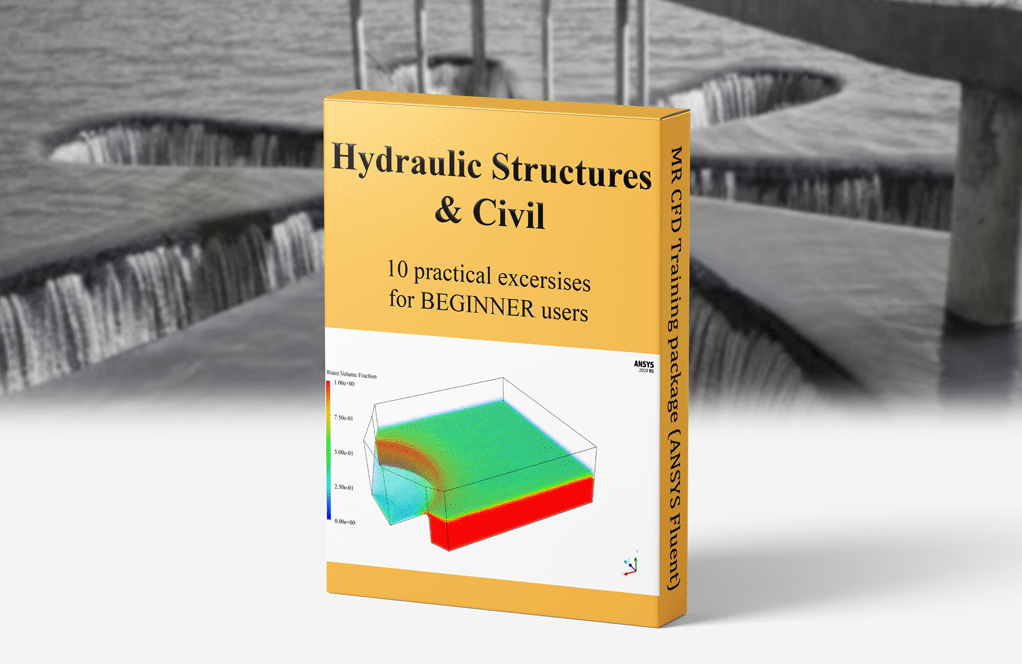

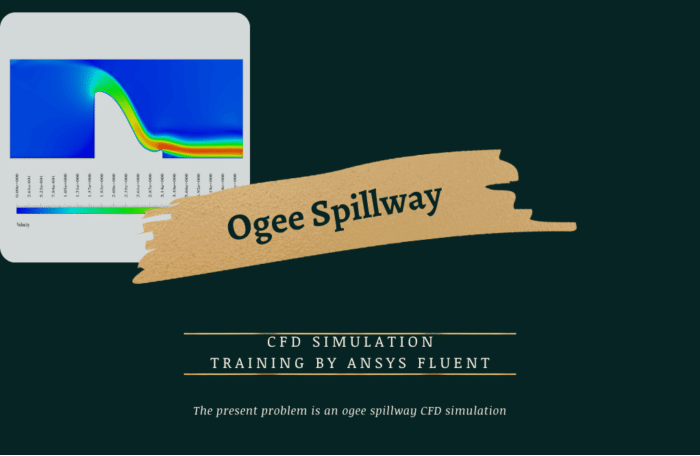

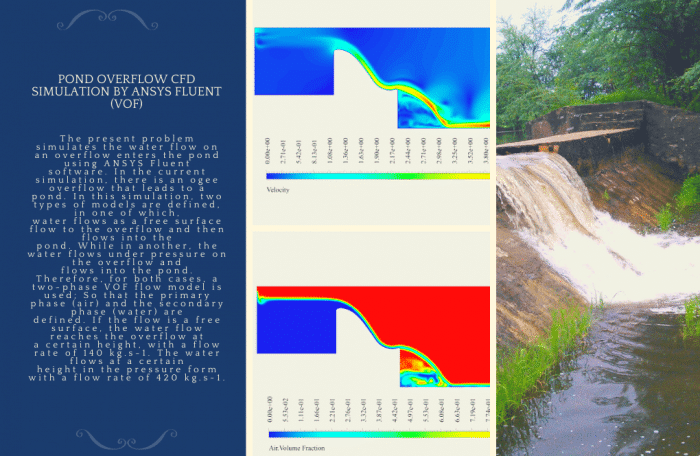
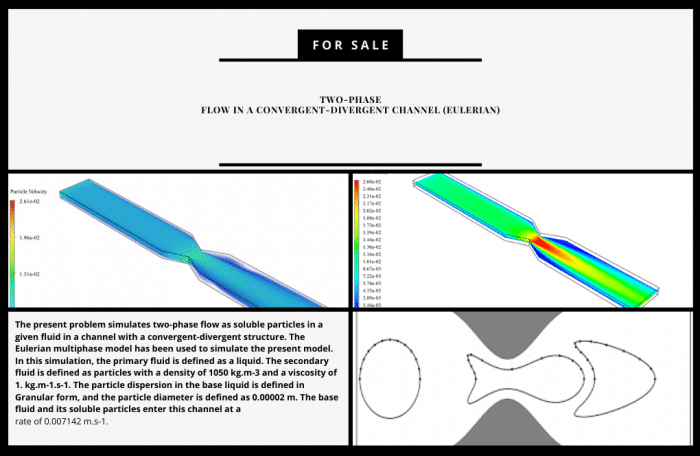

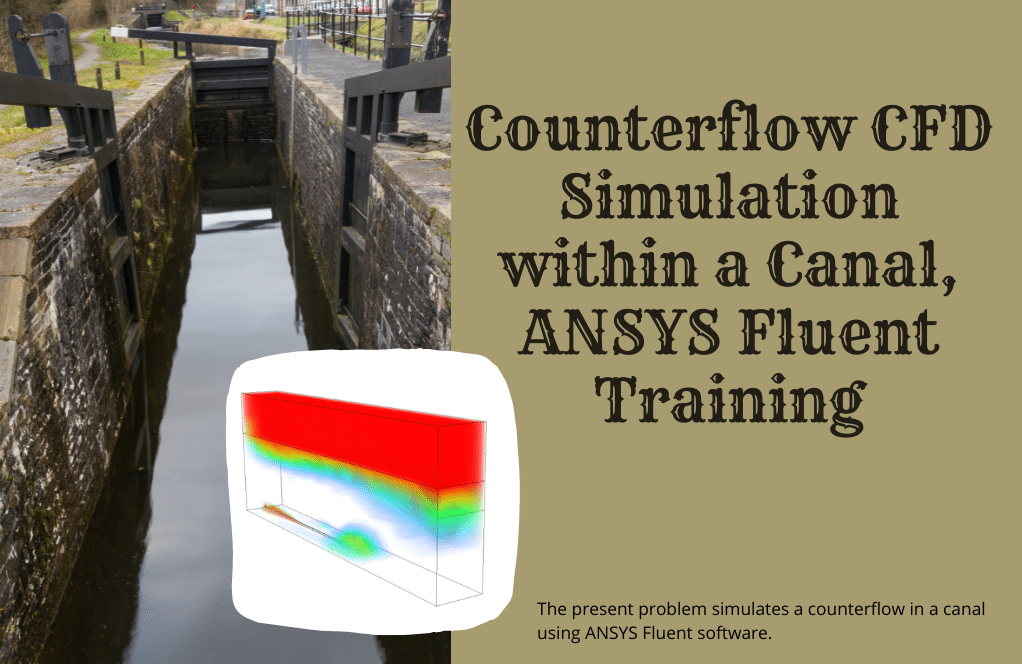
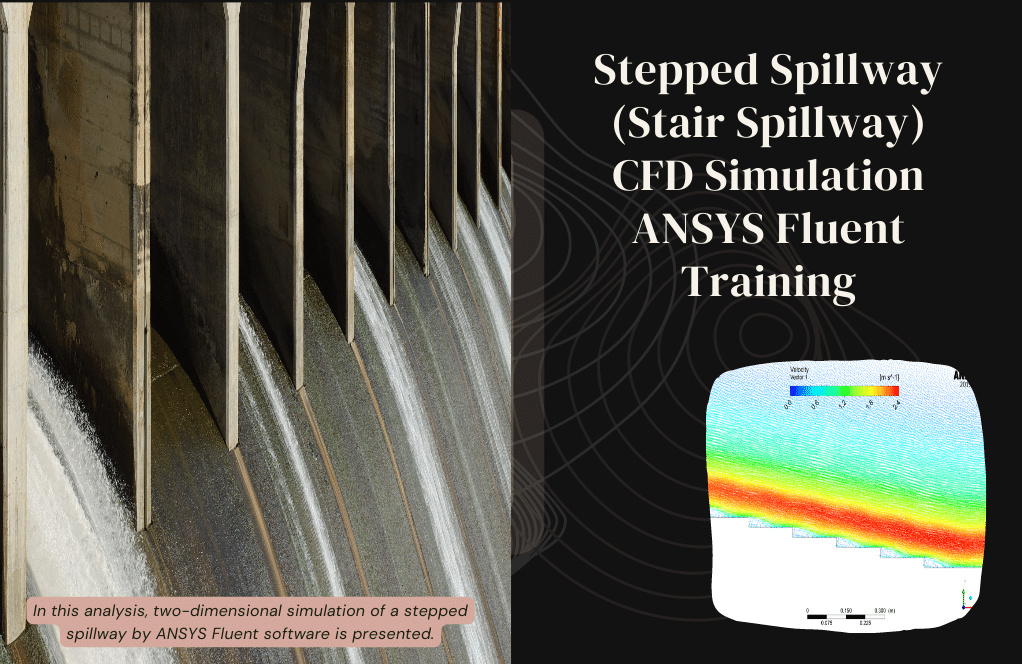
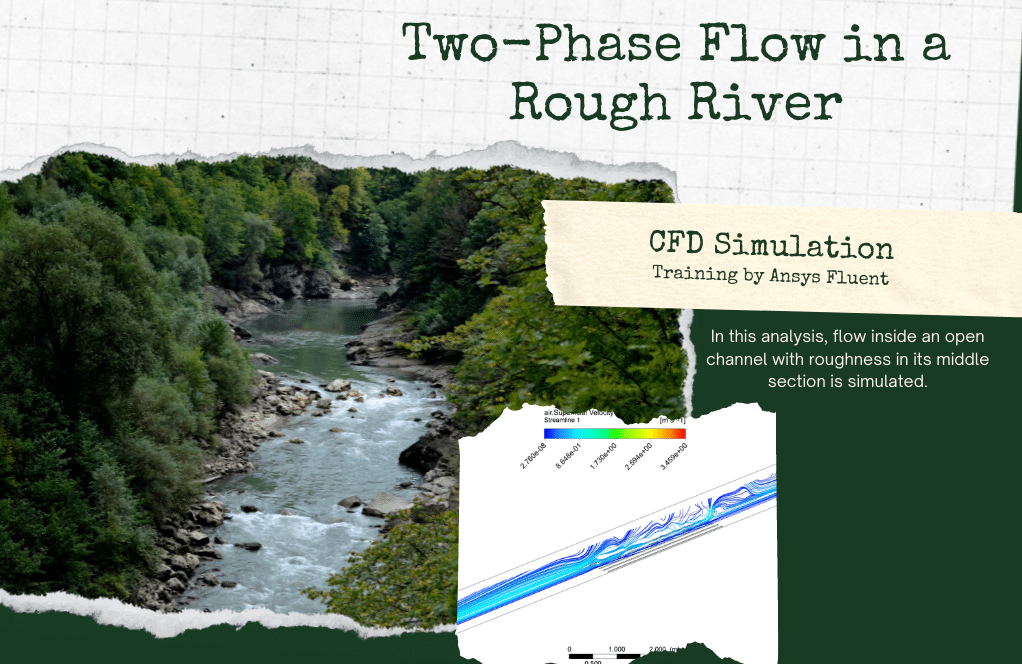
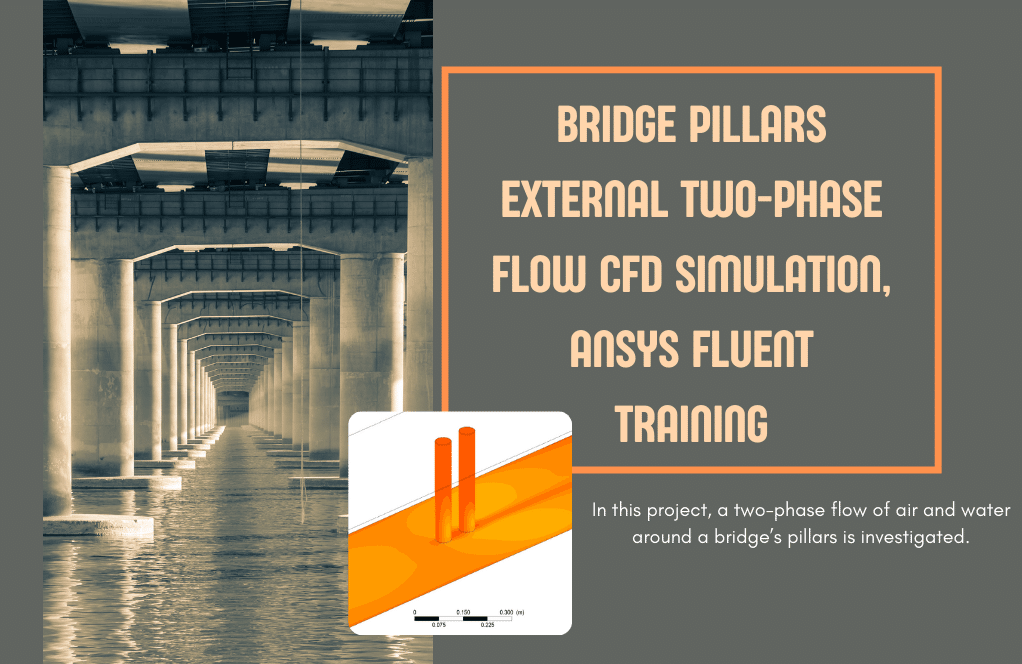
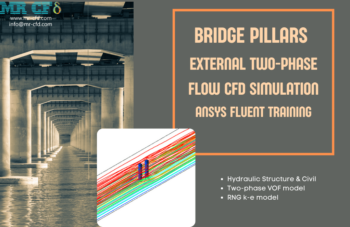
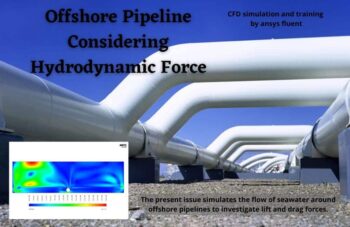
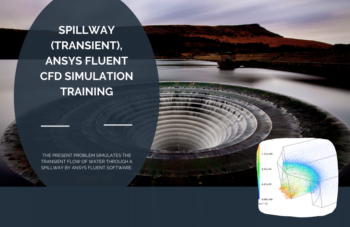
Monica Witting –
The Hydraulic Structure and Civil Training Package seems very comprehensive. Especially the counterflow in a canal simulation in number 9 appears interesting. Can you clarify how exactly the opposite direction flow is introduced in the simulation?
MR CFD Support –
In problem no. 9’s simulation of counterflow in a canal, water is introduced from two different sources. There is a primary flow in the canal, and then a secondary flow is introduced through a pipe lying at the canal’s floor. This secondary flow moves horizontally but in the opposite direction to the primary flow. The simulation illustrates and analyses the fluid dynamics and interaction between the two opposing flows.
Ms. Reina Brekke II –
The training package was incredibly helpful! The variety of hydraulic structures and spillway exercises allowed me to not only learn how to set up and simulate these types of projects but also to understand the application of different solvers and models in ANSYS Fluent. What I found very beneficial was the step-by-step training movie which made it easier to follow along and replicate the analysis. It was really suitable for a beginner like me and has given me the confidence to start my own projects!
MR CFD Support –
Thank you for the positive feedback! It’s fantastic to hear that our training package met your needs and has equipped you with the knowledge to independently manage your CFD projects. We strive to provide comprehensive and easy-to-follow materials to support learners at every level. Your confidence to embark on new simulations is exactly the outcome we hope all our users achieve. We wish you the best in your future projects and are always here to help should you need further assistance!
Mollie Hammes IV –
I recently completed the ‘Hydraulic Structure and Civil Training Package for Beginners’. The step-by-step guidance for 10 diverse practical exercises was enlightening! The transition from the basics of dam spillways to the challenging dynamics of water around bridge pillars was smooth and very educational. The inclusion of VOF and multiple flow models provided an outstanding hands-on experience in CFD analysis. Thank you, MR CFD, for such a practical learning approach.
MR CFD Support –
We’re thrilled to hear that you found the training package engaging and educational! It’s rewarding to know that our approach to teaching practical CFD applications in hydraulic and civil engineering has resonated with you. Thank you for your positive feedback, and we hope you’ll find our other products just as useful in your future endeavours.
Kareem Hettinger –
I just completed the Hydraulic Structure and Civil Training Package, and I was thoroughly impressed with how each of the 10 practical exercises built upon the previous ones, providing a deep understanding of ANSYS Fluent for Hydraulic Structures and Civil engineering applications. The variety of problems covered, from spillways to counterflows, and the detail in which turbulent flow, two-phase flow, and multiphase flow dynamics were addressed has substantially increased my confidence in tackling complex hydraulic simulations.
MR CFD Support –
Thank you for your kind feedback! We’re delighted to hear that the package met your learning needs and has empowered you with the skills to approach complex hydraulic simulations with confidence. Keep an eye out for more enriching content and feel free to reach out if you need further assistance on your CFD journey!
Emile Sanford –
I thoroughly enjoyed going through each practical exercise. The step-by-step problems increased my understanding of hydraulic structures, and I can see how these exercises will be useful for real-world engineering projects. Each problem introduced a new aspect of fluid dynamics and the Eulerian multiphase model explanation was especially intriguing.
MR CFD Support –
Thank you so much for the positive feedback. It’s fantastic to hear you found each exercise valuable and that it has enhanced your understanding of hydraulic structures and fluid dynamics. We strive to provide practical, real-world applications, and we’re glad you found the content enlightening and useful.
Miss Dolly Roberts I –
I had a wonderful experience using the Hydraulic Structure and Civil Training Package! The step-by-step approach for beginners was perfectly structured, easing into the complexities of ANSYS Fluent simulations. The varied exercises provided a wide scope of understanding – spillways, offshore pipelines, bridge pillars, and more – each with its unique challenge which really helped consolidate my learning of hydraulic structures and civil engineering aspects. Overall, a solid foundation-building resource for any beginner!
MR CFD Support –
Thank you for your positive feedback! We’re thrilled to hear that the Training Package provided a comprehensive and easy-to-follow learning experience for you. We’re glad that the range of exercises enriched your understanding of ANSYS Fluent and hydraulics structures in civil engineering. It’s always rewarding to hear from satisfied learners. If you ever have any questions or need further assistance, don’t hesitate to reach out!